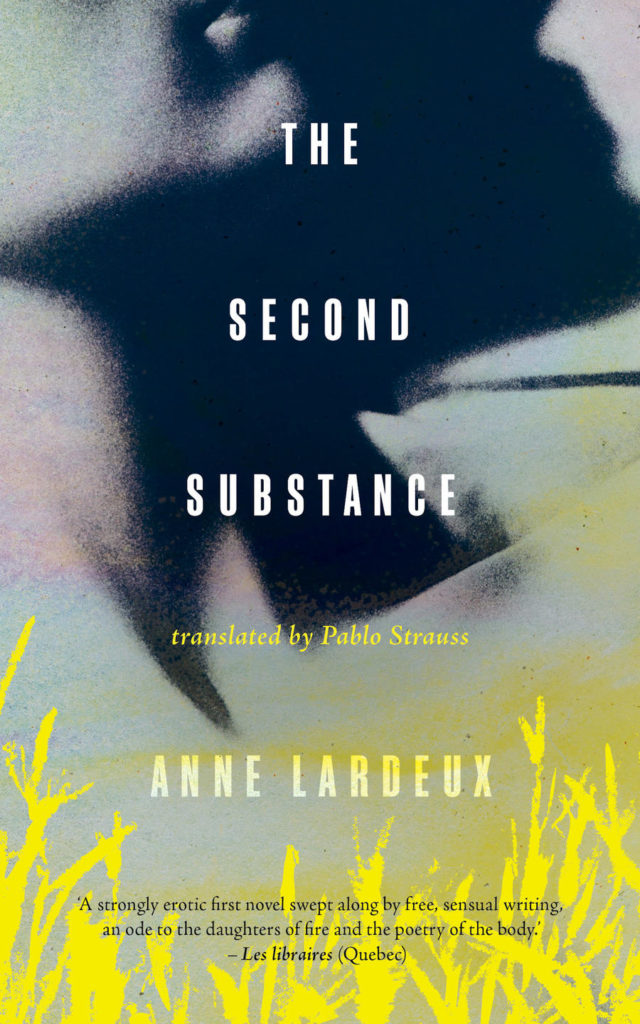
The Second Substance
Anne Lardeux (translated by Pablo Strauss), 180 pgs, Coach House Books, chbooks.com, $21.95 CDN
It takes a particular point of view to wrench the beauty of the sublime from industrial blight. Montreal, apparently, has the right conditions, as evidenced by Anne Lardeux’s novel, The Second Substance. Originally published in French as Les mauvais plis, and translated into English by Pablo Strauss, the book channels the same sensual ennui that powered the music of Godspeed You! Black Emperor in Mile End during the early 2000s, as it explores the intersections of sex, radicalism, purpose and resistance among a commune of squatters in an abandoned gas station on the city’s outskirts.
Working in a pastiche that encompasses diary entries, fragments of screenplay, shifting perspectives and short, enigmatic chapters, Lardeux gives us characters and scenarios, but little in the way of plot. There is Antonia, and Mona, and the Girl with No Name, and an Old Man and a policewoman; and their stories, so to speak, are fucked. At the Station, where they live, sex is a vessel for revolution. Annihilating its boundaries is a way to orient oneself against the decay of late-stage capitalism. If you like ass-eating, this one’s for you: “we’re lapping away to make them wet,” muse one passage, “and whose ass will open up first to who, let’s make a bet.”
While it’s poetic enough and creates a lush mood of grimy eroticism, leveraging Lardeux’s talent for capturing sensory detail, The Second Substance’s experimentalism wrestles with the musk of the overly familiar. Young people fucking in revolt is a bit of a cliché by now, especially when it’s this stylistically French. Everybody is always smoking, which feels precious and a bit archaic, and there is no work of fiction in which the phrase “like in a Truffaut film, or something more handmade like Olivier Godin” is not explosively obnoxious. Bold in form but without much shape, the novel slides around its sweaty breasts and dusty lots and oil-stained auto carcasses, creating shapes that are pretty but defy meaning.
Herein, perhaps, lies The Second Substance’s intractable problem: its essence is to resist. Resisting narrative convention, resisting taboos, resisting names, it embodies the quality of the substance described in the book’s epigraph, which quotes the American poet, Anne Boyer: “There is rarely any easy kind of absorption,” only “a different substance, one that repels.” In The Second Substance, one gets the sense of a strong book that wishes it had learned to give in just a bit.
